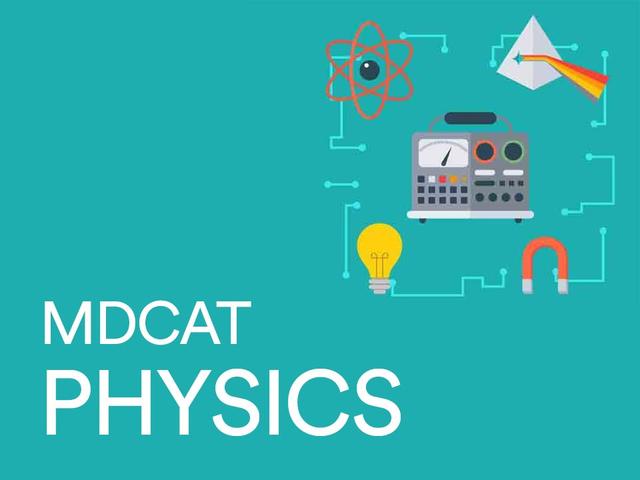
By Umair Instructor
Starting from 15Rs
This course includes
Systems of Units
Young's Double Slit Concept
Diffraction
A levels Introduction
Mass Defect and Binding energy
Trial Quiz | 3
Trial Quiz | 2
Trial Quiz | 1
1.1 Physical Quantities
1.2 Systems of Units
1.3 Errors and Uncertainties
2.1 Displacment and Velocity
2.2 Acceleration and Velocity-Time Graph
2.3 Equations & Laws of Motion
2.4 Momentum
2.5 Projectile Motion Part I
2.6 Projectile motion Part II
2.7 Torque and Equilibrium
2.8 Motion and Force-MCQ Discussion Part I
2.9 Motion and Force-MCQ Discussion Part II
3.0 Elastic and In-elastic collisions
3.1 Work
3.2 Power and Energy
3.3 Work, Power and Energy-MCQ Discussion
4.1 Angular Displacement
4.2 Angular Velocity and Angular Acceleration
4.3 Centripetal Force and Geostationary Satellites
5.1 Simple Harmonic Motion
5.2 Properties of SHM and Circular Motion
5.3 Phase and Mass Spring System
5.4 Combination of Springs and Simple Pendulum
5.5 Conservation of Energy
5.6 Oscillations-MCQ Discussion
5.7 Oscillations & Resonance
6.1 Waves and Relation between Phase & Path difference
6.2 Electromagnetic Spectrum
6.3 Reflection of Waves , Speed of Sound & Factors Affecting Speed of Sound (Optional Topic)
6.4 Stationary Waves in a Stretched string
6.5 Stationary Waves in an Organ Pipe
6.6 Doppler's Effect and Its Uses
6.7 Applications and Waves-MCQ Discussion
6.8 Waves-MCQ Discussion
Waves | Practice Quiz 1
Waves | Practice Quiz 5
Waves | Practice Quiz
7.1 Interference of Light Waves
7.2 Young´s Double Slit Experiment (Part I)
7.3 Young´s double slit experiment (Part II)
7.4 Diffraction
7.5 Optical Fibers (Optional Topic)
8.1 Kinetic Theory of Gasses, Pressure & Temperature
8.2 Internal Energy
8.3 Specific Heat Capacity
8.4 Heat and Thermodynamics-MCQ Discussion
8.5 Heat and Thermodynamics-MCQ Discussion
9.1 Coulomb's Law
9.2 Electric Intensity and Electric Potential
9.3 Capacitor and Capacitance
9.4 Energy Stored in Capacitor
9.5 Series And Parallel Capacitance Part I
9.6 Series And Parallel Capacitance Part II
9.7 Electrostatics-MCQ Discussion
9.8 Electrostatics-MCQ Discussion
10.1 Current and Its Effects
10.2 Ohms Law and Power Dissipation in Resistors
10.3 Kirchhoff's Rules, Potential Difference and emf
10.4 Series and Parallel Resistance - MCQ Discussion I
10.5 Series and Parallel Resistance - MCQ Discussion II
11.1 Magnetic Field Properties
11.2 Force on a conductor and Field due to Solenoid
11.3 Force on a Moving Charge and Charge to Mass Ratio
11.4 Electromagnetism-MCQ Discussion I
11.5 Electromagnetism-MCQ Discussion II
12.1 Magnetic Flux, Faraday's Law & Lenz's Law
12.2 Induced EMF
12.3 AC Current
12.4 Transformer and Its Uses
13.1 Tensile Stress, Strain and Young’s Modulus
13.2 Hooks Law
13.3 Energy Stored in Deformed Material
14.1 PN Junction (Optional Topic)
14.2 Half and Full Wave Rectification
14.3 Operational Amplifier and Its Characteristics
15.1 Energy of Photon
15.2 Photoelectric Effect
15.3 Debroglie Wavelength
15.4 Energy Levels of Hydrogen Atom & Spectral Lines
15.5 X-Rays Part-I
15.6 X-Rays Part-II
15.7 Energy Band Theory
16.1 Nucleus, Nucleon Number and Charge Number
Nuclear Physics | practice Quiz 9
16.2 Radioactivity & Emission of Radiation
16.3 Radio Activity Part II
16.4 Half Life
16.5 Mass Defect
16.6 Fission and Fusion
16.7 Subatomic Particles
Nuclear Physics | Practice Quiz 1
Nuclear Physics | Practice Quiz 2
Nuclear Physics | Practice Quiz 3
Nuclear Physics | Quiz 4
Nuclear Physics | Practice Quiz 5
17.01 FLP 2008 Part I
17.02 FLP 2008 Part II
17.03 FLP 2008 Part III
17.04 FLP 2008 Part IV
17.05 FLP 2009 Part I
17.06 FLP 2009 Part II
17.07 FLP 2009 Part III
17.08 FLP 2010 Part I
17.09 FLP 2010 Part II
17.10 FLP 2010 Part III
17.11 FLP 2016 Part I
Physics full length paper 2018
17.12 FLP 2016 Part II
17.13 FLP 2017 Part I
17.14 FLP 2017 Part II
17.15 LP 2017 Part III
18.1 Potentiometer
Watch This Guideline Video Before Proceeding Further
Work, Power & Energy + Circular Motion (Special Quiz-2)
Measurements, Motion & Force (Special Quiz-1)
Physics is a major portion of MDCAT. It has a large share in test with FORTY (40) MCQs out of 200. The key idea behind attempting physics to its 100% is only to stick with the course provided by UHS and getting the detailed concepts as well as shortcuts and time saving techniques to solve problems in as short time as possible. Nearpeer MDCAT Physics course allows you to prepare while sitting in your own couch and studying at your own schedule. This course allows you to practice thousands of online quiz modules while saving your progress graph for comparison with other students form all over Pakistan. This unique feature gives you a competitive environment to prepare with more passion. Looking forward to see you enrolled :)
Why choose this course
3+ students are Recommending this Course